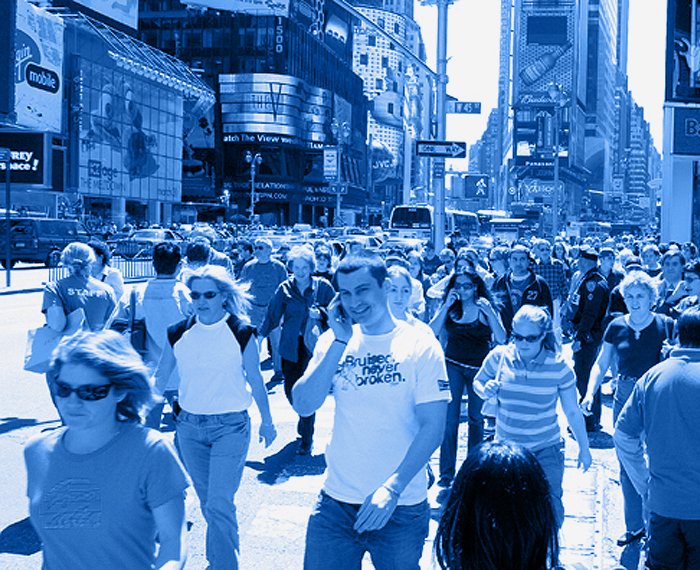The restaurant industry is no different from any other industry that truly has started to demonstrate a multigenerational workforce, whereby every individual group adds different insights, strengths, and expectations in the workplace; from the era of the Baby Boomers to Generation Z. Understanding these differences and committing to an inclusive, supportive environment for all employees are how a multi-generational workforce is effectively managed and motivated. Here’s how you can get your multigenerational team to be well-managed and motivated in the restaurant industry.

Understand Generational Differences
Understanding the characteristics and values that define each generation is a key first step in managing a multigenerational workforce. For instance, Baby Boomers are focused on loyalty, hard work, and stability. They may want or need clear, structured communication and equally appreciate recognition for experience. The Generation X individual is generally independent and resourceful; this generation values work-life balance and perhaps looks for opportunities for professional development.
The main differences are that millennials seek collaboration, flexibility, and a sense of purpose in their work. They are often motivated by opportunities for growth and feedback. Finally, among the youngest, Generation Z shows comfort with technology, prefers speed in the workplace, and is looking for more transparency and feedback.
With these generational characteristics, you can frame a management approach in such a manner as to meet the needs and expectations of each of them, thus making them work together more harmoniously and become productive.
Encourage Open Communication
The key to effectively managing a multigenerational workforce is open communication. You need to encourage regular feedback and dialogue across generational divide boundaries among team members. Prepare an environment where all will feel free to share their ideas, concerns, and experiences.
This might be significantly enabled by regular team meetings, one-on-one check-ins, and open-door policies. Also, consider face-to-face meetings, emails, and messaging apps as means of communication; different generations may prefer one channel over another. Open communication would help tone down generational gaps, reduce misunderstandings, and make a group of people more cohesive.
Invite Flexibility
The need to have a flexible workforce is more pressing in modern times. With a diverse team, different generations have different preferences regarding work schedules, tasks, and roles. Offering flexible work arrangements helps to accommodate these needs, as the options of part-time or shift will have more employees performing due to the satisfaction of their needs.
For instance, while older workers may appreciate a highly predictable schedule, younger workers may value the ability to trade shifts or work outside the traditional hours. By embracing flexibility, you can also meet the diverse needs of your team and allow for an inclusive and supportive workplace environment.
Opportunities for Growth and Development
Development opportunities across generations are highly motivational in nature for all employees. That being said, what constitutes development opportunities is quite different for each of the generations. For instance, leadership training and highly skilled development may attract Baby Boomers and Generation X, while Millennials and Generation Z will consider mentorship, continuous feedback, and quick ways of learning new skills as more important.
From workshops, through online courses, mentorship programs, to even cross-training, offering a variety of professional development options will make all your employees in your company feel appreciated and motivated. Investing in the growth of your people will pay off not only in increased job satisfaction but also in performance overall in the restaurant.
Recognize and Reward Contributions
Recognition and rewards are very good motivators for all generations, but in delivery, the effectiveness may vary. For instance, older generations appreciate formal recognition such as awards or public acknowledgement of their contributions, while younger generations prefer immediate and informal recognition, like praise at team meetings, or even a shoutout on social media.
A recognition program for every different type of preference will keep your whole team motivated. Consider mixing formal and informal recognition, including employee of the month, personalized thank-you notes, and team celebrations. By integrating restaurant loyalty program software into your operations, you can encourage your team to focus on delivering exceptional service, enhance customer experiences, and foster a sense of shared success. This can lead to a more motivated and engaged workforce that understands the importance of customer loyalty in driving the restaurant’s success.
Encourage Collaboration and Mentorship
This, in turn, can be promotional in bridging gaps between generations, advancing collaboration, and building better team dynamics. Pairing younger employees with more mature experienced staff members for mentorship roles allows the transfer of experiences and skills to benefit both parties by showing younger employees, on most occasions, guidance, and the older generation feeling their experience and expertise are valued.
This also breaks the barriers and lets different thoughts flow through to others when promoting cross-generational collaboration over projects and tasks. It will help not only in teamwork but also in developing a sense of cohesion and mutual respect across employees.
Conclusion
In essence, managing the multigenerational workforce in the restaurant industry requires a clear and nimble process. Once you know how generational differences go hand in hand, with some stress on opening up doors for communications, embracing flexibility, promoting opportunities of growth, recognizing contributions, or encouraging collaboration, you’d eventually manage to bring a positive, productive atmosphere at work-a place that will address your employees’ needs altogether. Your restaurant will, therefore, not improve in performance alone but in teamwork on its own merit: engaged, motivated, and committed to success.

Founder Dinis Guarda
IntelligentHQ Your New Business Network.
IntelligentHQ is a Business network and an expert source for finance, capital markets and intelligence for thousands of global business professionals, startups, and companies.
We exist at the point of intersection between technology, social media, finance and innovation.
IntelligentHQ leverages innovation and scale of social digital technology, analytics, news, and distribution to create an unparalleled, full digital medium and social business networks spectrum.
IntelligentHQ is working hard, to become a trusted, and indispensable source of business news and analytics, within financial services and its associated supply chains and ecosystems




























